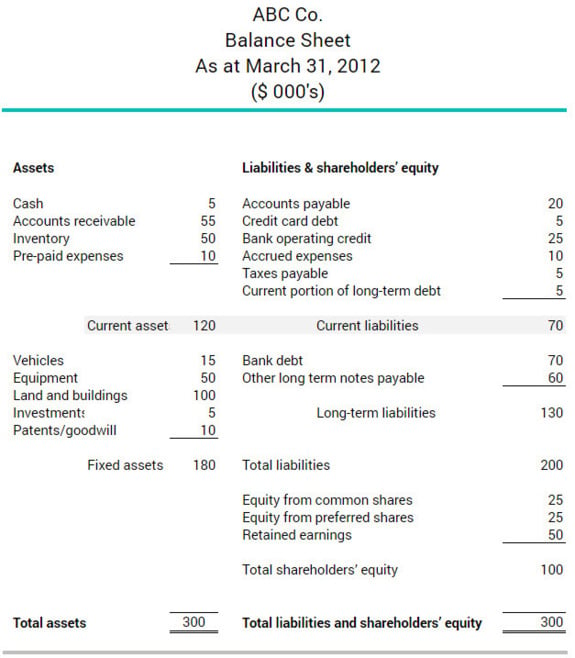Current ratio
The calculation of current ratio is simple:
Current ratio = current assets / current liabilities
Most businesses work to maintain a current ratio between 1.70 and 2.0.
More about the current ratio
From the balance sheet excerpt below, ABC Co.’s current ratio would be:
$120,000 / $70,000 = 1.7
With a current ratio of 1.7:1, ABC Co. is in a healthy position to cover its current liabilities.


Useful resources
Money and finance